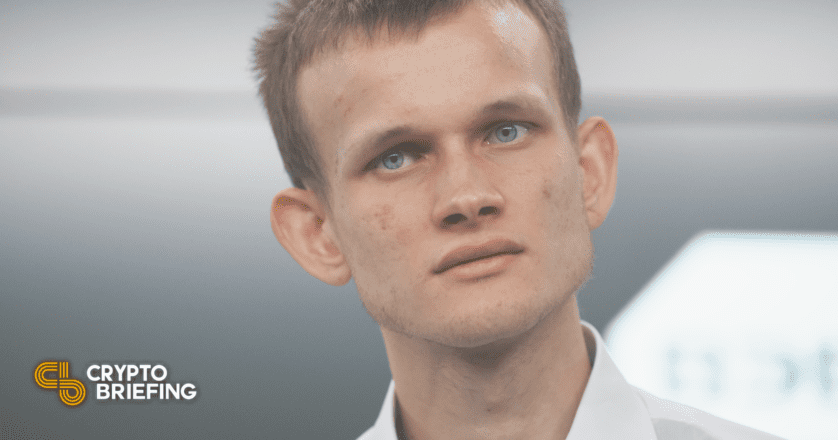Vitalik Buterin Puts Forward EIP-4488
The proposal is meant to offer a short-term solution to the problem of high Layer 2 gas fees.

Key Takeaways
- Vitalik Buterin has co-authored a new Ethereum Improvement Proposal, EIP-4488, that seeks to reduce gas costs of Layer 2 scaling solutions.
- The proposal emphasizes the importance of Layer 2 Rollups but also acknowledges their imperfections.
- If implemented, the proposals could dramatically decrease Layer 2 gas fees in the very near future.
Share this article
This week Vitalik Buterin and Ethereum developer Ansgar Dietrichs co-authored a new Ethereum Improvement Proposal called EIP-4488 that seeks to cut the gas fees of Ethereum Layer 2 scaling solutions. The proposal is intended to act as a more immediate fix to high gas costs while more robust solutions are developed.
An Effective (But Short-Term) Solution
Vitalik Buterin, along with Ethereum developer Ansgar Dietrichs, has put forward a new Ethereum Improvement Proposal designed to lower Layer 2 gas fees in the short term while more effective long-term solutions are developed.
Ethereum gas fees have been very high for the last few months, and while Layer 2 scaling solutions that use either Optimistic Rollups or ZK-Rollups are “the only trustless scaling solution for Ethereum,” even gas fees using these protocols are too expensive for some. For example, Optimism and Arbitrum often provide fees 3-8x lower than users can get on the Ethereum base layer, and ZK-Rollups can provide fees up to 100x lower than on the Ethereum base layer, but these fees still are not trivial.
EIP-4488 seeks to further decrease Layer 2 gas fees in two ways: by decreasing transaction calldata cost, which is a primary mechanism for both Optimistic Rollups and ZK-Rollups, as well as by adding a ceiling for total transaction calldata that can be in a block. Increasing the amount of data space available to rollups is, according to Buterin, doable today, as block sizes are nowhere near sizes that would threaten network stability.
While data sharding might be seen as the long-term solution to the imperfections of rollups, this proposal seeks to reduce gas fees in the very short term, possibly by Christmas of this year, according to a tweet by the team at zkSync, itself a Layer 2 scaling protocol.
With Buterin himself calling for an “ecosystem-wide transition to a rollup-centric Ethereum” as the desired short-term solution to cut gas costs, it is no surprise that Ethereum scaling solutions have grown alongside Ethereum. Just last week, the largest cryptocurrency exchange, Binance, announced it would support Ethereum Layer 2 deposits via Arbitrum, and only yesterday did Boba, an Optimistic Layer 2 Rollup solution, reach a total value locked of over $1 billion, which was a 1,200% increase since Nov. 14.
Disclosure: At the time of writing, the author of this piece owned ETH and several other cryptocurrencies.
Share this article
